Ensconced amidst the verdant hills of Andhra Pradesh, the Tirupati Balaji Temple, or Sri Venkateswara Temple, embodies both spiritual devotion and architectural grandeur. This hallowed pilgrimage site in Tirumala attracts millions of devotees annually, seeking blessings from Lord Venkateswara, a manifestation of Lord Vishnu. Renowned as one of the wealthiest and most-visited temples globally, Tirupati Balaji is steeped in mythology and historical significance. Inscriptions and records trace its importance back to ancient times, showcasing its enduring legacy across dynasties. As you embark on this spiritual sojourn, prepare to be enveloped by a serene aura, witnessing age-old rituals and ceremonies performed with unwavering dedication.
Whether a devout pilgrim or a curious explorer, the Tirupati Balaji Temple offers an unparalleled experience. This guide equips you with essential information to make the most of your visit, from navigating the temple complex and its customs to exploring nearby attractions and immersing yourself in the local culture. Let us embark on a journey into the divine splendor of Tirupati Balaji, where faith and tranquility converge in perfect harmony.
How to reach:
Air: Tirupati Airport (TIR), also known as Renigunta Airport, is your gateway by air. Located 15 kilometers from Tirupati, it offers connections to major Indian cities like Chennai, Hyderabad, Bangalore, and Delhi. Taxis and buses are readily available to take you to Tirupati and then on to Tirumala.
Train: Tirupati Railway Station boasts excellent connectivity across India, with regular trains from major hubs like Chennai, Bangalore, Hyderabad, and Mumbai. For those nearby, Renigunta Junction, a major railhead 10 kilometers away, offers additional options. From the station, reach the temple via bus, auto-rickshaw, or taxi.
Road: Tirupati enjoys a well-developed road network with several state and national highways. Explore these options:
- Buses: Andhra Pradesh State Road Transport Corporation (APSRTC) operates frequent and affordable services to Tirupati from major cities and towns in Andhra Pradesh, Karnataka, and Tamil Nadu. Choose from regular or deluxe options.
- Private Vehicles: Driving offers flexibility. Tirupati is roughly 150 kilometers from Chennai, 250 kilometers from Bangalore, and 730 kilometers from Hyderabad. The roads are generally well-maintained.
- Taxis: For comfort and ease, consider hiring a taxi or cab, especially for groups or families.
Reaching Tirumala from Tirupati
- Buses: APSRTC provides convenient shuttle services between Tirupati and Tirumala, running every 30 minutes.
- Private Vehicles: Ascend the hills via two well-maintained ghat roads: Alipiri Ghat Road and Srivari Mettu Ghat Road. Ensure your vehicle is in good condition for the climb.
- Walking: Devotees can embark on a spiritual journey by foot. The Alipiri Pathway (around 9 kilometers) and the Srivari Mettu Pathway (about 2.1 kilometers) are popular choices.
Best time to visit:
Winter (November to February): Arguably the most popular time to visit, winter offers comfortable temperatures (15°C to 25°C) ideal for sightseeing and pilgrimage. However, expect larger crowds, especially during holidays and weekends, which can lead to longer waits for darshan.
Summer (March to June): While daytime temperatures can be scorching (above 40°C), especially for those planning to walk uphill, early mornings and evenings offer pleasant weather. This period often sees fewer crowds, potentially leading to a quicker and more peaceful darshan experience.
Monsoon (July to October): The monsoon provides a welcome respite from the summer heat, with temperatures ranging from 25°C to 35°C. Lush greenery and cooler climes can enhance the pilgrimage experience. However, heavy rainfall can cause inconvenience, particularly for those traveling by road or walking uphill. Slippery pathways and potential travel delays are factors to consider.
Attractions:
Tirupati Balaji Temple:
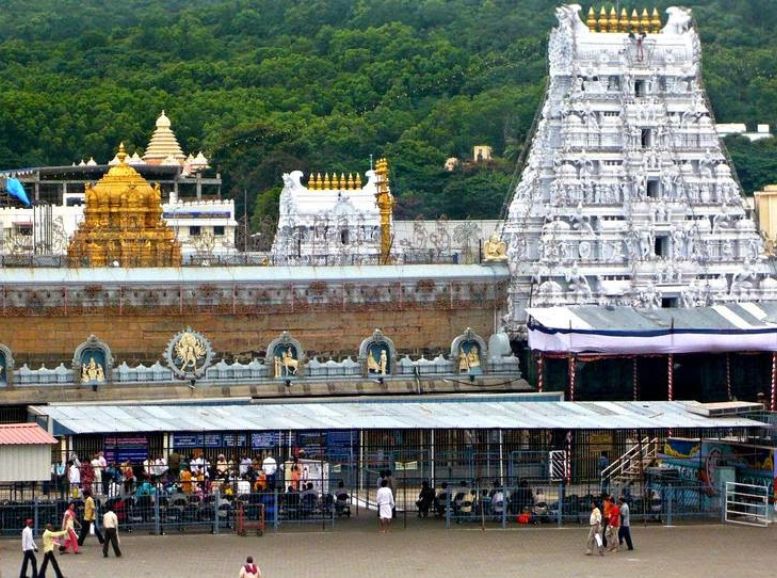
Crowned atop the serene Tirumala hills in Andhra Pradesh, the Tirupati Balaji Temple, also known as the Sri Venkateswara Temple, beckons millions annually. Revered as one of the world’s wealthiest and most-visited places of worship, it draws devotees seeking blessings from Lord Venkateswara, a manifestation of Lord Vishnu.
The temple itself is a Dravidian architectural marvel. Intricate carvings and towering, sunlight-kissed gopurams (gateway towers) create a breathtaking facade. Within the inner sanctum, the jewel-bedecked idol of Lord Venkateswara radiates an ethereal glow, leaving pilgrims awestruck. Beyond a spiritual center, the temple complex is a cultural tapestry. Numerous shrines, halls, and courtyards resonate with the fervor of age-old rituals and ceremonies. The sheer magnitude of devotion and the mystical ambience transform a visit to Tirupati Balaji Temple into a truly transformative experience.
Sri Padmavathi Ammavari Temple:
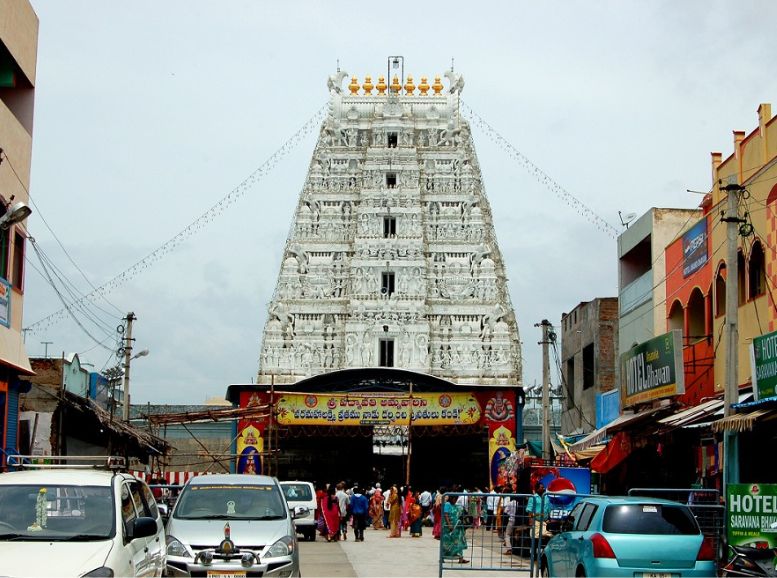
Just five kilometers from the bustling Tirupati Balaji Temple lies a serene sanctuary – the Sri Padmavathi Ammavari Temple in Tiruchanur. Dedicated to Goddess Padmavathi, the consort of Lord Venkateswara, this temple holds immense significance for devotees. Completing a pilgrimage to Tirupati feels incomplete without offering respects here.
Surrounded by verdant gardens and sacred ponds, the temple exudes a sense of peace and beauty. The main deity, Goddess Padmavathi, is enshrined in a seated posture, radiating grace and tranquility. Devotees flock to seek blessings for prosperity, happiness, and well-being. The temple complex itself is a treasure trove, housing additional shrines dedicated to Lord Krishna and Sundararaja Swamy.
Akasa Ganga:
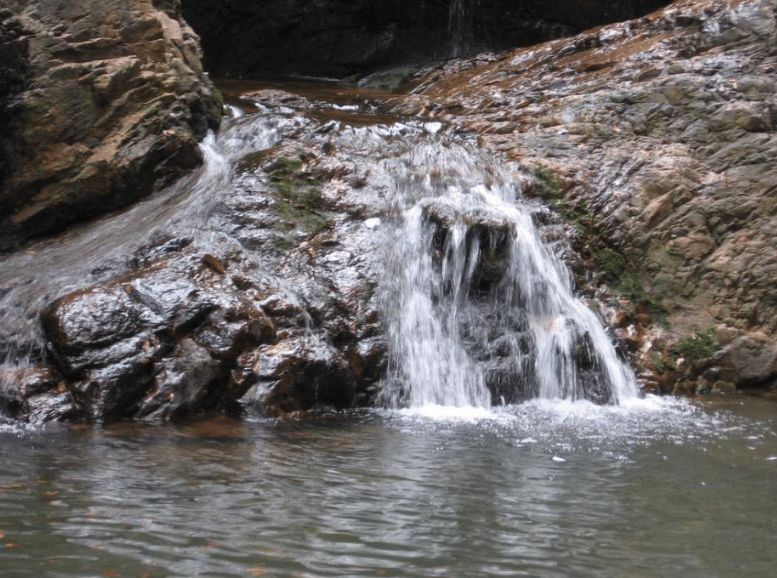
Nestled roughly 3 kilometers from the heart of Tirupati Balaji Temple lies Akasa Ganga, a sacred waterfall revered for its spiritual and natural beauty. Legend imbues the cascading waters with divine significance, as they are used in the daily rituals of the temple. This connection to the temple deepens Akasa Ganga’s role in the spiritual tapestry of Tirumala.
The waterfall tumbles from a height, its sound a soothing melody echoing through the tranquil surroundings. Pilgrims are drawn to Akasa Ganga’s holy waters, seeking purification by bathing in its cascading flow. Lush greenery and rocky terrain frame the falls, offering a welcome respite from the temple town’s vibrancy. The trek to Akasa Ganga becomes a spiritual journey itself, a chance for reflection and connection with nature’s embrace.
Papavinasam Theertham:
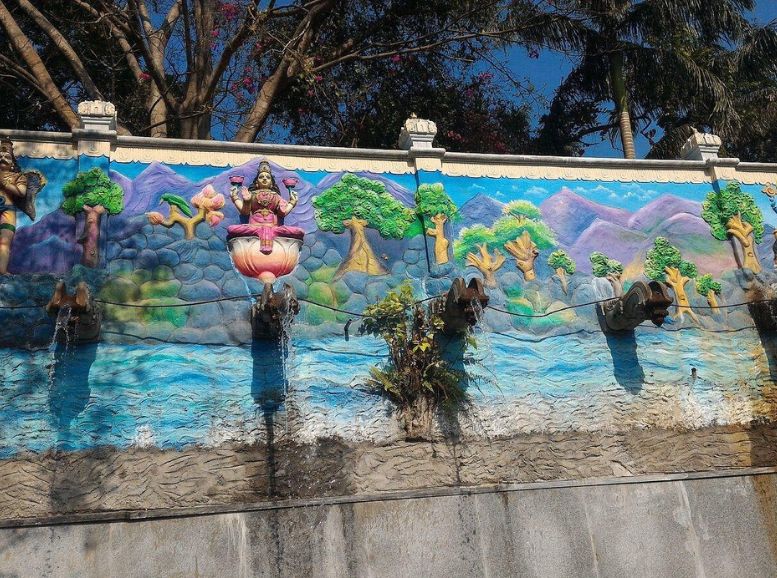
Another jewel in Tirumala’s spiritual crown is Papavinasam Theertham, a sacred waterfall named for its purported power to absolve sins (“Papavinasam” translates to “destruction of sins”). Devotees flock here, believing a dip in these cascading waters washes away their transgressions.
Enveloped by a picturesque landscape of dense forests and rocky cliffs, the waterfall holds undeniable natural beauty. Pilgrims often incorporate Papavinasam Theertham into their pilgrimage, seeking spiritual renewal and a sense of cleansing. The serene environment and the ceaseless flow of water create a meditative ambiance, perfect for quiet reflection and prayer. While the trek to Papavinasam Theertham may test your resolve, the reward is a breathtaking sight and a profound spiritual experience.
Sri Varahaswami Temple:
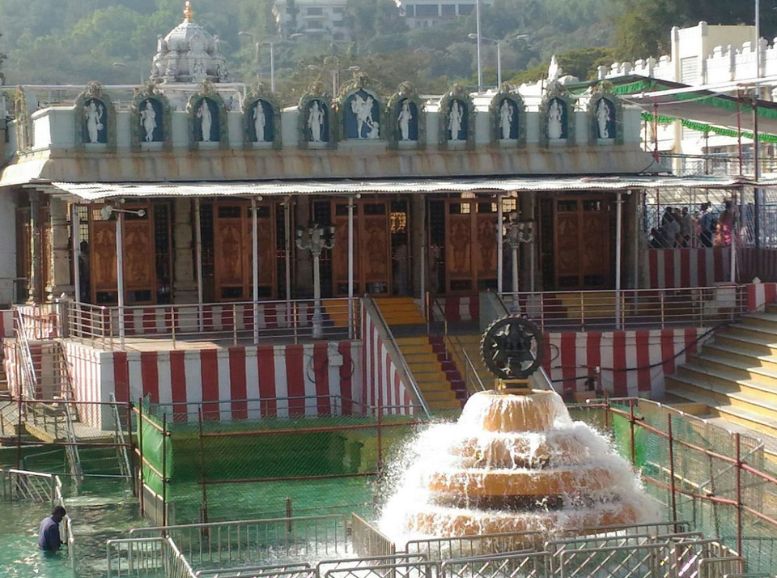
Nestled near the famed Tirupati Balaji Temple, Sri Varahaswami Temple honors Lord Varaha, an avatar of Lord Vishnu depicted in his boar form. Tradition dictates a visit here before proceeding to the main Venkateswara Temple. Beyond its religious significance, Sri Varahaswami Temple is an architectural gem. Intricate carvings adorn its ancient structures, whispering tales of bygone eras.
The enshrined deity, Lord Varaha, is revered for rescuing the Earth from the clutches of the ocean. The temple’s tranquil atmosphere, steeped in history and mythology, beckons pilgrims seeking a deeper connection. Witnessing the deeply rooted rituals and ceremonies here offers a window into the region’s rich cultural tapestry.
Local Experiences:
Darshan: Seek the blessings of Lord Venkateswara through the sacred darshan rituals. Immerse yourself in the spiritual energy as you participate in this age-old practice to Tirupati Balaji Temple.
Festivals of Faith: Witness the vibrant cultural tapestry of the region by attending festivals like Brahmotsavam, Vaikunta Ekadasi, and Rathasaptami. These colorful celebrations come alive with music, dance, and joyous devotion.
A Taste of Blessings: Savor the delectable prasadam, a sacred offering of Lord Venkateswara. Enjoy the laddus, vadas, and other local delicacies, imbued with divine grace.
A Symbolic Offering: Partake in the tradition of hair tonsuring, a mark of devotion to the Lord. This age-old practice signifies letting go and seeking renewal.
Unveiling History in Stone: Explore the architectural marvels of the temple complex. Delve into the significance of the main shrine, mandapams (halls), and towering gopurams, each whispering tales of the temple’s rich history.
A Culinary Adventure: Embark on a culinary journey through South Indian cuisine. Savor the flavors of idlis, dosas, and sambar at local eateries and restaurants.
Treasures to Take Home: Browse the local markets and discover a treasure trove of souvenirs. From iconic Tirupati laddus to handcrafted keepsakes and religious items, find the perfect memento of your pilgrimage.
A Scenic Ascent: Lace up your boots and embark on a scenic trek to the Tirumala Hills. Take in breathtaking panoramic views of the temple and the surrounding landscape.
A Cultural Tapestry: Immerse yourself in the vibrant local culture. Attend cultural events, witness captivating traditional dance performances, and connect with the friendly local people.
Inner Peace Through Rituals: Participate in sacred rituals, pujas (prayers), and homams (fire ceremonies) to seek spiritual enlightenment and inner peace. Let these ancient practices guide you on your journey towards self-discovery.
Travel tips:
- Do Your Research: Familiarize yourself with temple timings, special puja schedules, and any festivals or events happening during your visit. This will help you plan your itinerary effectively.
- Book in Advance: Especially during peak seasons and festivals, consider booking your accommodation well in advance to avoid last-minute hassles.
- Dress Modestly: When visiting the temple, dress modestly and respectfully. Avoid revealing or inappropriate attire.
- Temple Etiquette: Remove your footwear before entering the temple premises, as per tradition. Maintain silence and refrain from loud conversations or disruptive behavior inside the temple.
- Darshan Preparations: Be prepared for queues, especially during peak hours. Consider special darshan tickets for a quicker entry. Carry essentials like water, handkerchiefs, and any offerings you wish to present.
- Make Offerings: It’s customary to offer prasad (devotional offerings) like flowers, coconuts, fruits, or make monetary donations to the temple. Follow the temple’s guidelines on acceptable offerings. Be cautious of touts soliciting donations outside the temple. Donate through official channels if you wish to contribute.
- Hydration and Energy: Carry water bottles and light snacks to stay hydrated and energized, especially during extended visits.
- Cultural Sensitivity: Respect local customs and traditions. Seek guidance from locals or temple staff if unsure about specific customs or rituals. Be mindful of photography restrictions inside the temple premises.
- Safety First: Keep your belongings secure and be aware of pickpockets in crowded areas. Follow safety guidelines, especially when trekking or exploring natural attractions. Wear appropriate footwear and stay on designated paths.
- Reliable Transportation: Choose reliable transportation for traveling to and from the temple, whether by bus, taxi, or private vehicle. Check public transportation timings if visiting nearby attractions.
- Weather Considerations: Be prepared for varying weather conditions, especially during summer and monsoon seasons. Carry sunscreen, umbrellas, and raincoats if needed.
- Explore Further: Take some time to explore other attractions like waterfalls, temples, forts, or zoological parks to enrich your Tirupati experience.
Conclusion
A pilgrimage to Tirupati Balaji Temple transcends the spiritual realm, offering a captivating blend of cultural and natural exploration that lingers in the memory. From the awe-inspiring Sri Venkateswara Temple to the tranquility of cascading waterfalls and the grandeur of historic forts, each element of this journey fosters reflection, devotion, and discovery. By planning ahead with Xplro.com, respecting local customs, and staying informed, you can ensure a smooth and unforgettable experience. Whether you seek divine blessings, marvel at architectural wonders, or yearn to reconnect with nature, Tirupati and its sacred sites cater to every desire. As you embark on this spiritual odyssey with Xplro.com as your companion, may you find peace, inspiration, and a deep connection with the divine.
FAQs
- Q: What is the significance of the Tirupati Balaji Temple?
- A: The Tirupati Balaji Temple is devoted to Lord Venkateswara, an embodiment of Lord Vishnu, and holds great spiritual importance for Hindus.
- Q: How can I reserve darshan tickets beforehand?
- A: Darshan tickets can be pre-booked through the official website of the Tirumala Tirupati Devasthanams (TTD).
- Q: Are there any dress code guidelines for Tirupati Balaji temple visits?
- A: Yes, visitors are required to dress modestly and traditionally, refraining from revealing or inappropriate attire.
- Q: Can photography be done within the Tirupati Balaji temple premises?
- A: Generally, photography is prohibited inside the main sanctum sanctorum of the Tirupati Balaji Temple.
- Q: How long does a darshan usually take at the Tirupati Balaji temple?
- A: The duration of darshan varies depending on factors such as crowd size and the type of darshan ticket.
- Q: What are the transportation options to reach the Tirupati Balaji temple?
- A: Visitors can access the Tirupati Balaji Temple by air, rail, or road, with Tirupati boasting its own airport, railway station, and well-connected road network.
- Q: Is there nearby lodging available?
- A: Yes, various lodging options, including guesthouses, hotels, and TTD-managed lodges, are accessible near the Tirupati Balaji Temple.
- Q: What nearby attractions are worth exploring?
- A: Nearby attractions worthy of exploration include the Sri Padmavathi Ammavari Temple, Akasa Ganga waterfall, and Chandragiri Fort.
- Q: Are mobile phones and electronic devices permitted within the Tirupati Balaji Temple?
- A: Generally, mobile phones, electronic devices, and valuables are prohibited inside the Tirupati Balaji Temple premises.
- Q: What COVID-19 safety protocols are implemented at the Tirupati Balaji temple?
- A: COVID-19 safety measures include compulsory mask-wearing, temperature screenings, social distancing protocols, and sanitation measures.





